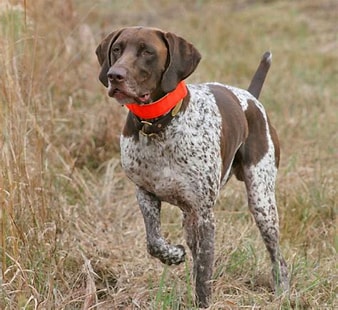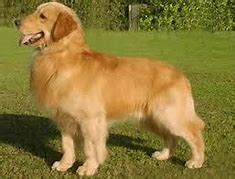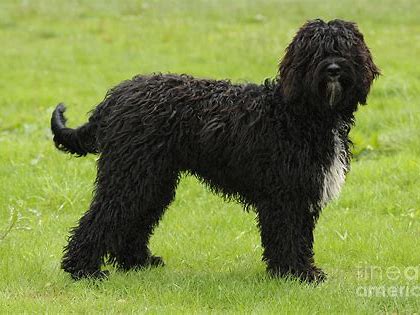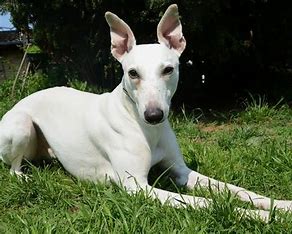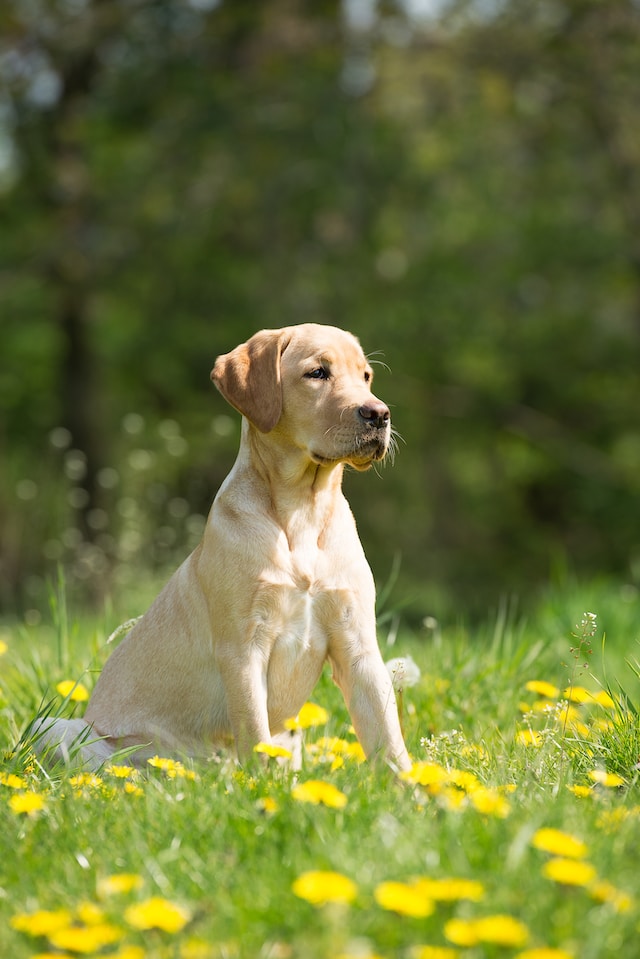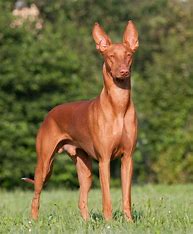The Best Dog Breed for Search and Rescue: Find Your Perfect Partner
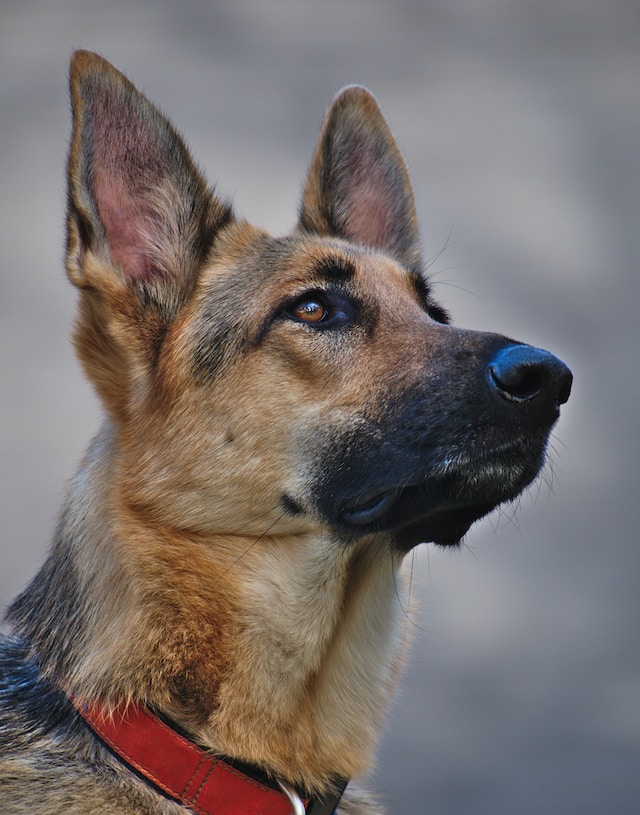
Are you searching for the best dog breed for search and rescue? Look no further! When it comes to search and rescue operations, certain dog breeds possess the skills and traits needed to excel in this important role. In this article, we will explore some of the top breeds that are known for their exceptional abilities in search and rescue missions.
From their keen sense of smell to their intelligence and agility, these breeds are highly trained and ready to help in times of emergencies. Whether it’s locating missing persons, detecting survivors in natural disasters, or tracking down evidence, these dogs are truly heroes in their own right.
Physical Characteristics and Stamina of Ideal Search and Rescue Dog Breeds
When it comes to search and rescue missions, certain dog breeds possess physical characteristics and stamina that make them ideally suited for these tasks. These breeds are often selected based on their size, endurance, agility, and other traits that enable them to navigate challenging terrains and perform the necessary tasks. Here are some key physical characteristics to consider when choosing a search and rescue dog breed:
Size and Build
Search and rescue dogs come in various sizes, from small to large breeds. The size of the dog can determine their ability to navigate different terrains and perform specific tasks. Smaller breeds may excel at search and rescue missions in confined spaces, while larger breeds can handle rough terrains and carry or drag heavy objects if needed.
Endurance and Stamina
Search and rescue operations require dogs with high levels of endurance and stamina. These dogs need to be able to cover long distances, work for extended periods of time, and remain active even in challenging and demanding environments. Breeds known for their endurance and stamina are well-suited for search and rescue missions.
Agility and Strength
Agility and strength are important qualities for search and rescue dogs, as they often need to navigate through obstacles, climb or jump over obstacles, and assist in lifting or moving objects. Breeds that are agile and strong, with good muscular development, are preferred for search and rescue work.
By considering these physical characteristics, search and rescue teams can select dog breeds that are best suited for the specific demands of their missions. In the next section, we will explore the temperament traits to look for in a search and rescue dog.
Temperament Traits to Look for in a Search and Rescue Dog
When choosing a dog breed for search and rescue work, certain temperament traits are essential for success in the field. The following are some key characteristics to consider when selecting a search and rescue dog:
- High Energy and Stamina: Search and rescue work can be physically demanding, so a dog with high energy levels and stamina is crucial to endure long hours and challenging terrains.
- Intelligence and Trainability: Search and rescue dogs need to be intelligent and trainable, as they must learn and respond to various commands and tasks in high-pressure situations.
- Confidence and Fearlessness: Dogs involved in search and rescue missions need to exhibit confidence and fearlessness to navigate unfamiliar environments and approach potentially dangerous situations without hesitation.
- Sociability and Friendliness: Since search and rescue dogs often work alongside other team members, including handlers and other dogs, sociability and friendliness towards humans and other animals are important qualities.
- Resourcefulness and Independence: In search and rescue scenarios, dogs may encounter unexpected obstacles or challenges. A dog with resourcefulness and independence can problem-solve and make decisions to continue the mission.
- Resilience and Adaptability: Search and rescue dogs must be able to adapt to changing circumstances, handle stress, and recover quickly from physical or mental exertion to maintain effectiveness during missions.
It is crucial to choose a dog breed that possesses these temperament traits in order to maximize their effectiveness and efficiency in search and rescue operations.
Training Requirements for Search and Rescue Dog Breeds
Training search and rescue dogs requires dedication, time, and specialized skills. These highly trained canines must possess specific traits and undergo rigorous training to effectively assist in search and rescue missions. Here are some essential training requirements for search and rescue dog breeds:
Basic Obedience Training
Before advanced search and rescue training can begin, dogs must first undergo basic obedience training. This includes teaching them commands such as sit, stay, come, and heel. Obedience training establishes a foundation of discipline and control for further training.
Tracking and Scent Detection
Search and rescue dogs must have a strong sense of smell and be able to track scents over various terrains. Training involves teaching dogs to follow a specific scent and locate missing persons or objects. This often involves using scent articles or scent trails to simulate real-life search scenarios.
Agility and Physical Fitness
Search and rescue dogs need to be agile and physically fit to navigate challenging terrains such as rubble, forests, or mountains. Training includes exercises and activities that build strength, endurance, and agility, such as obstacle courses, climbing, and swimming.
Search Techniques and Strategies
Training focuses on teaching search and rescue dogs different search techniques and strategies to effectively locate missing individuals. This can involve systematic area searches, scent cone searches, or even specialized skills like water rescue or avalanche search.
Handler Communication and Partnership
Search and rescue dogs work closely with their handlers, and training emphasizes effective communication and partnership between the two. Handlers learn to read and interpret their dog’s behavior and signals, while dogs learn to respond to their handler’s commands and cues.
Simulated Rescue Scenarios
Training often includes simulated rescue scenarios to simulate real-life situations. This can involve mock search missions, staged disaster scenes, or training exercises in challenging environments. These scenarios help prepare dogs and handlers for the unexpected and improve their problem-solving skills.
The training requirements for search and rescue dog breeds are demanding and extensive. It requires professional guidance, expertise, and consistent practice to develop the skills and abilities necessary for these specialized canines to perform their life-saving duties effectively.
Common Breeds Used in Search and Rescue Missions
When it comes to search and rescue missions, certain dog breeds are well-suited for the task due to their physical characteristics, temperament traits, and specialized skills. Here are some of the common breeds that are frequently used in search and rescue operations:
- German Shepherd: Known for their intelligence, endurance, and agility, German Shepherds are versatile and often employed in various search and rescue roles, including tracking, trailing, and detection.
- Labrador Retriever: With their friendly temperament and excellent sense of smell, Labrador Retrievers are often utilized in search and rescue missions involving missing persons, as well as in water search operations.
- Border Collie: Border Collies are highly intelligent, energetic, and trainable, making them suitable for search and rescue tasks that require agility, obedience, and problem-solving abilities.
- Bloodhound: Known for their exceptional sense of smell, Bloodhounds are often used in search and rescue operations that involve tracking scents over long distances or in challenging terrains.
- Golden Retriever: Recognized for their friendly and gentle nature, Golden Retrievers are commonly deployed in search and rescue missions involving water, such as water rescue or recovery efforts.
These are just a few examples of the breeds commonly utilized in search and rescue missions. The suitability of a particular breed may depend on the specific requirements of the operation, as well as factors such as terrain, climate, and environment.
Working with Different Dog Sizes for Search and Rescue Purposes
When it comes to search and rescue missions, dogs of various sizes can be trained and utilized based on their unique advantages and capabilities. Different dog sizes offer specific benefits depending on the terrain, environment, and objectives of the search and rescue operation. Here’s a closer look at how different dog sizes are utilized for search and rescue purposes:
Small Breeds
Small breeds are often agile, nimble, and able to navigate through tight spaces or rough terrain that may be inaccessible to larger dogs. These dogs can maneuver in urban settings, rubble, or dense vegetation, making them suitable for search and rescue operations in areas where larger breeds may struggle to reach.
Medium-Sized Breeds
Medium-sized breeds are versatile and adaptable, capable of working in various terrains and environments. They possess the endurance and stamina to cover significant ground while maintaining agility and the ability to negotiate obstacles. These dogs are often used for wilderness searches or tracking missions.
Large Breeds
Large breeds are known for their strength, size, and ability to undertake physically demanding tasks. They can carry heavy loads, navigate challenging terrains, and provide a powerful presence. Large breeds, such as German Shepherds or Belgian Malinois, are commonly used for search and rescue operations that require strength, protection, and extensive area coverage.
Considerations for Dog Sizes
When selecting a search and rescue dog, it’s essential to consider the specific requirements of the mission. Factors such as the terrain, climate, objectives, and resources available should be taken into account. Additionally, the handler’s experience and physical capability to work with a particular dog size should also be considered to ensure effective teamwork and successful outcomes.
By matching the appropriate dog size to the specific search and rescue needs, teams can optimize the effectiveness and efficiency of their operations. Whether it’s a small, medium, or large breed, the right dog size can make a significant difference in the success of search and rescue missions.
Specialized Skills and Abilities of Search and Rescue Dog Breeds
Search and rescue (SAR) dog breeds possess unique skills and abilities that make them well-suited for the demanding tasks involved in locating missing persons or disaster victims. These dogs undergo rigorous training to develop their natural instincts and enhance their specialized capabilities. Here are some key skills and abilities that SAR dog breeds commonly possess:
Exceptional Scenting Abilities
One of the most crucial skills of SAR dogs is their exceptional scenting abilities. These dogs have a highly developed sense of smell that allows them to detect and follow the scent of a missing person or a person trapped under debris. Their keen sense of smell enables them to cover large areas quickly and accurately locate individuals in need of assistance.
Agility and Physical Fitness
SAR dog breeds are known for their agility and physical fitness. These dogs are adept at navigating through challenging terrains such as mountains, forests, or rubble, often in adverse weather conditions. Their athleticism allows them to cover a variety of landscapes efficiently and access areas that may be difficult for humans or machines to reach.
Excellent Problem-Solving Skills
In addition to their physical capabilities, SAR dogs possess excellent problem-solving skills. They are trained to assess and analyze complex search scenarios, making quick and informed decisions. These dogs can work independently or as part of a search team, effectively communicating with their handler and cooperating with other search and rescue personnel.
Ability to Work in High-Stress Environments
SAR dogs are specifically bred and trained to remain calm and focused in high-stress environments. They must be able to handle noise, distractions, and chaotic situations without becoming overwhelmed or anxious. This resilience allows them to maintain their concentration and continue searching for prolonged periods, increasing the chances of successful rescue operations.
Strong Bond with Handlers
Search and rescue dogs develop a deep bond with their handlers, which is essential for effective teamwork and communication. These dogs rely on their handlers for guidance and direction, responding to verbal and non-verbal cues during search missions. The strong bond between SAR dogs and their handlers enhances their effectiveness and ensures a harmonious working relationship.
By possessing these specialized skills and abilities, search and rescue dog breeds play a vital role in locating and saving lives during challenging and life-threatening situations. Their physical capabilities, problem-solving skills, and exceptional scenting abilities make them invaluable contributors to search and rescue efforts.
Considerations for Search and Rescue Dogs in Different Environments and Terrains
Search and rescue missions can take place in a variety of environments and terrains, each with its own challenges and considerations. When selecting a search and rescue dog breed, it’s important to consider how they will perform in different settings. Here is a brief paragraph followed by a bullet list of considerations for search and rescue dogs in different environments and terrains:
- Mountainous terrain: Dogs that are agile, surefooted, and have strong endurance are well-suited for navigating steep slopes and rocky terrain.
- Wooded areas: Breeds with good scenting abilities and the ability to maneuver through dense vegetation excel in locating missing persons in wooded areas.
- Water and marine environments: Some breeds are natural water dogs, with webbed feet and excellent swimming abilities, making them ideal for search and rescue in bodies of water.
- Urban and disaster settings: Dogs that are comfortable in crowded and chaotic environments, and have strong obedience skills, are crucial for search and rescue operations in urban areas or during disasters.
- Desert or arid regions: Breeds with a high tolerance for heat and arid conditions, as well as good endurance, are preferred for search and rescue missions in desert or arid regions.
It’s important to match the specific environment and terrain with a search and rescue dog breed that possesses the necessary physical characteristics, skills, and temperament to perform effectively in those conditions. In the next section, we will discuss factors to consider when choosing the right dog breed for your search and rescue needs.
Choosing the Right Dog Breed for Your Search and Rescue Needs
Physical Characteristics and Stamina of Ideal Search and Rescue Dog Breeds
When selecting a dog breed for search and rescue purposes, it is important to consider physical characteristics and stamina. Look for breeds that possess traits such as endurance, agility, and durability, as these qualities are crucial for search and rescue missions. Some breeds known for their physical capabilities include the German Shepherd, Belgian Malinois, Labrador Retriever, and Border Collie.
Temperament Traits to Look for in a Search and Rescue Dog
In addition to physical characteristics, temperament traits are also important when choosing a search and rescue dog. Look for breeds that are highly trainable, focused, and have good problem-solving abilities. These traits are necessary for dogs to work effectively in high-stress situations. Breeds such as the Golden Retriever, Bloodhound, and Australian Shepherd are known for their excellent temperament qualities.
Training Requirements for Search and Rescue Dog Breeds
Different search and rescue dog breeds have varying training requirements. It is essential to consider the time and effort needed to train and maintain a search and rescue dog. Some breeds require more intensive and specialized training, while others may have a more adaptable nature. Consult with professionals and experienced handlers to determine the level of training commitment required for specific breeds.
Common Breeds Used in Search and Rescue Missions
Several dog breeds are commonly used in search and rescue missions due to their innate abilities and characteristics. These breeds excel in tracking scents, locating survivors, and navigating various terrains. Some commonly used search and rescue breeds include the German Shepherd, Labrador Retriever, Border Collie, Bloodhound, and Belgian Malinois. However, the best breed for search and rescue ultimately depends on the specific needs and requirements of the mission.
Working with Different Dog Sizes for Search and Rescue Purposes
Search and rescue dogs come in various sizes, and each size category has its advantages and considerations. Larger breeds, such as the German Shepherd or Saint Bernard, may have increased strength and endurance for demanding tasks. Smaller breeds, such as the Jack Russell Terrier or Beagle, may be more agile and maneuverable in tight spaces. Consider the unique challenges and requirements of different search and rescue scenarios when selecting a dog size.
Specialized Skills and Abilities of Search and Rescue Dog Breeds
Different search and rescue dog breeds possess specialized skills and abilities that make them suitable for specific types of search and rescue missions. Some breeds are highly skilled in wilderness search and rescue, while others excel in urban disaster scenarios or water-based rescues. Evaluate the specific needs and challenges of the search and rescue environment to determine which breed’s specialized skills align with those requirements.
Considerations for Search and Rescue Dogs in Different Environments and Terrains
Search and rescue dogs may encounter diverse environments and terrains during their missions. It is important to consider the specific challenges posed by different environments, such as dense forests, mountainous regions, or urban settings. Some breeds may have better adaptability or natural instincts to handle certain environments. Assess the potential terrains and conditions the search and rescue dog may encounter to choose a breed that can perform effectively in those environments.
Conclusion
Choosing the right dog breed for search and rescue needs requires careful consideration of physical characteristics, temperament traits, training requirements, and specialized skills. It is essential to evaluate each breed’s suitability for different search and rescue scenarios, as well as the unique challenges and requirements of specific environments and terrains. Working with professionals and experienced handlers can provide valuable insights and guidance in selecting the ideal search and rescue dog breed for your needs.
Conclusion
When choosing a search and rescue dog, it’s important to consider the physical characteristics, temperament traits, and specialized skills of different breeds. Breeds such as German Shepherds, Labrador Retrievers, and Border Collies possess the physical attributes and stamina necessary for search and rescue missions. These dogs are agile, enduring, and have excellent problem-solving skills.
In addition to physical traits, the temperament of the dog is crucial. Dogs used in search and rescue work should be highly trainable, intelligent, and confident. Breeds like Golden Retrievers, Bloodhounds, and Australian Shepherds are known for their temperament qualities that are essential in high-stress situations.
By taking into account the specific needs of the search and rescue mission, training requirements, and the characteristics of different dog breeds, you can choose the ideal search and rescue dog that will effectively contribute to saving lives in various environments and terrains.

